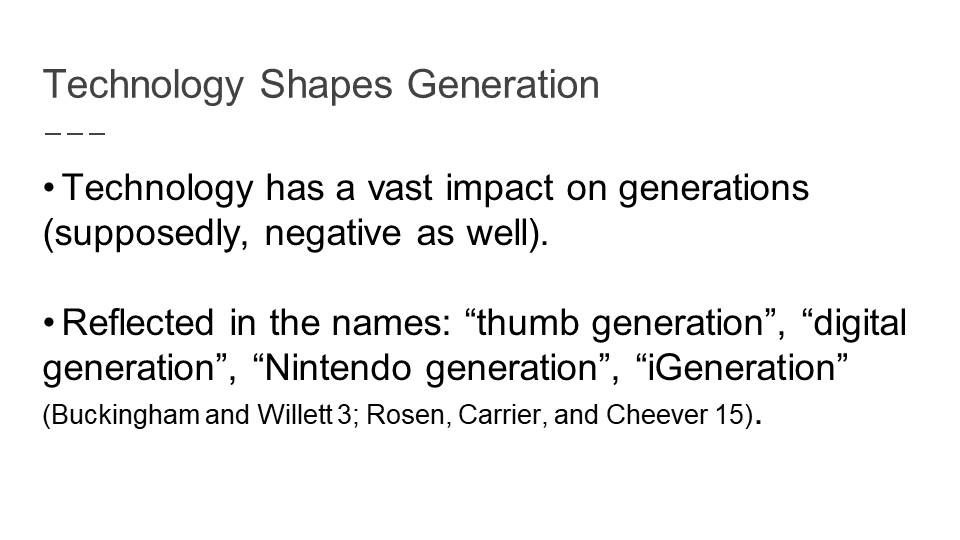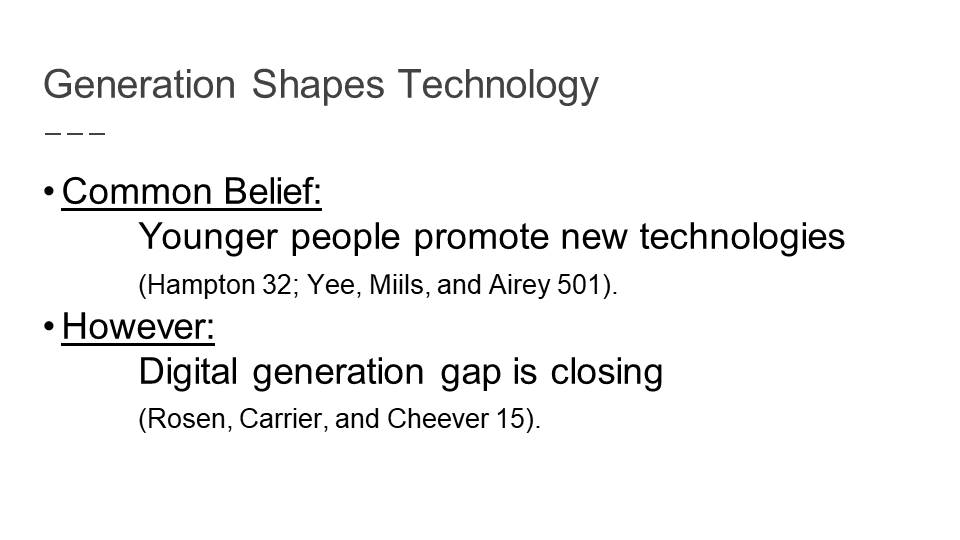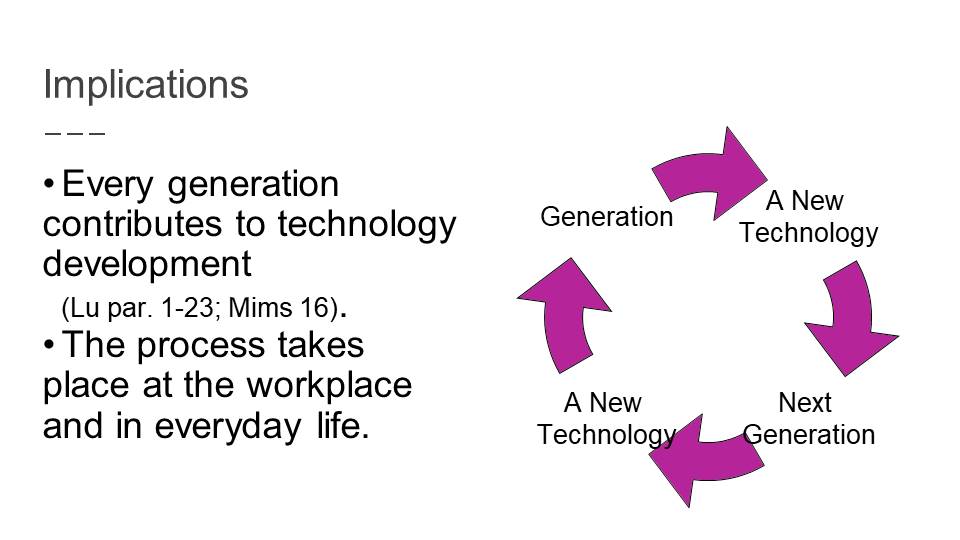Technology Shapes Generation
- Technology has a vast impact on generations (supposedly, negative as well).
- Reflected in the names: “thumb generation”, “digital generation”, “Nintendo generation”, “iGeneration” (Buckingham and Willett 3; Rosen, Carrier, and Cheever 15).
The importance that technologies have for new generations has long been discovered, and the consequences are still being discussed. An example of such a discussion if the questionable impact that video games violence has on children’s mentality (Buckingham and Willett 6). Still, the fact that technology in many ways shapes generations cannot be denied. As a result, technology can even define the names of generations: for example, it is not unusual for Generation Y to be called the “Thumb Generation” for their usage of thumb for game consoled and mobile phones (Buckingham and Willett 3; Rosen, Carrier, and Cheever 15).

Generation Shapes Technology
- Common Belief: Younger people promote new technologies (Hampton 32; Yee, Miils, and Airey 501).
- However: Digital generation gap is closing (Rosen, Carrier, and Cheever 15).
It is believed that younger people are more sensitive to the changes in technology (Hampton 32) In fact, the ability for change and technology promotion has been described as the ability of generation Y (Yee, Miils, and Airey 501). However, since the new technologies have already entered our life, it is not improbable that the situation will be changed. Skype is being mastered by children of four and five while older generation – Generation Y included – proceeds to adopt new technologies and promote them at work and home (Rosen, Carrier, and Cheever 15). The digital generation gap is becoming more likely to decrease (Buckingham and Willett 3). At the same time, the technological gap, while it appears to shape many of the contrasting features of various generations, is not the only difference that exists between generations as has been described above (Lu par. 1-23). Therefore, this fact is not going to solve the problem of generations conflict at the workplace, and every generation is bound to bring something new into the technological and management processes (Mims 16).

Implications
- Every generation contributes to technology development (Lu par. 1-23; Mims 16).
- The process takes place at the workplace and in everyday life.
Therefore, the differences in the worldview of generations ensure that every generation is bound to bring something new into the technological and management processes (Mims 16). Different generations are going to contribute to and maintain the technologies both at the workplace and in everyday life, shaping the future world that, in turn, will have an influence on the next generation, and this process appears to be cyclic. Technology creates new generations, and new generations help the older ones to create new technology, ensuring the continuous and smooth process of development.

Works Cited
Buckingham, David, and Rebekah Willett. Digital Generations. London, United Kingdom: Routledge, 2013. Print.
Hampton, Ross. “Technologies for Generation Y.” Accountancy SA 10 (2012): 32-3. ProQuest. Web.
Lu, Yiren. “Silicon Valley’s Youth Problem.”The New York Times Magazine, 2014. Web.
Mims, Christopher. “Generation X-Change.” Nature 467.7317 (2010): 16-8. ProQuest. Web.
Rosen, Larry D, L. Mark Carrier, and Nancy A Cheever. Rewired. New York, New York: Palgrave Macmillan, 2010. Print.
Yee, Kwang Chien, Erin Miils, and Caroline Airey. “Perfect Match? Generation Y as Change Agents For Information Communication Technology Implementation In Healthcare.” Studies In Health Technology And Informatics 136 (2008): 496-501. MEDLINE Complete. Web.